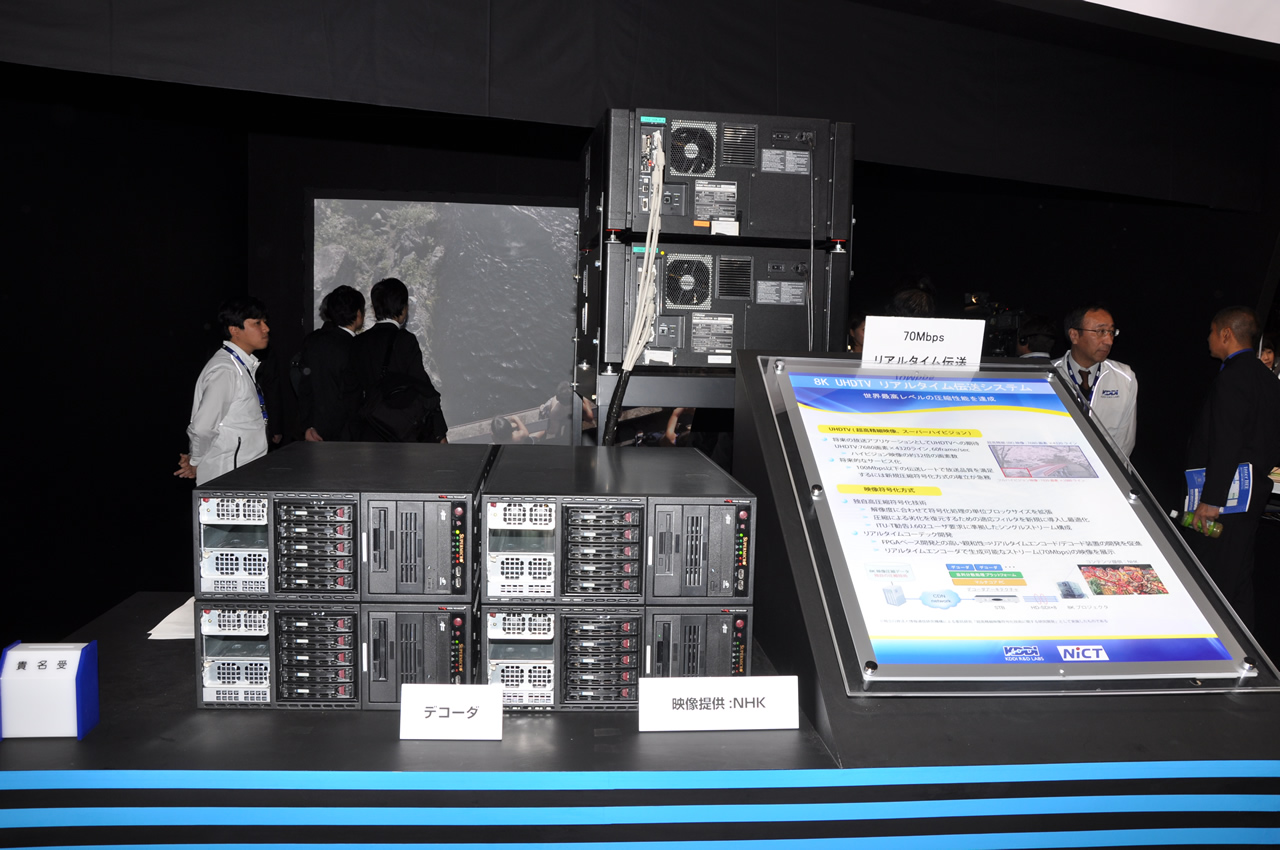Inter BEE 2010: KDDI R&D Labs Introduces High-Quality Video Solutions including Futuristic Video Application Technologies, 8K Real-Time Compressed Transmission, and Free Viewpoint Stadium 3D.
2010.11.18 UP

At the Inter BEE 2010 exhibition at Makuhari Messe, KDDI R&D Labs (booth #7209) exhibited the company's 8K(7680 pixel x 4320 line) full hi-vision UHDTV (Ultra Hi-Definition TV, also known as Super Hi-Vision) real-time transfer system.
This technology was researched and developed under contract from the National Institute of Information and Communications Technology. "The 8K full resolution 60fps UHDTV video demonstrated at this year's NAB SHOW used a 90Mbps compression format, but we have taken the opportunity here at Inter BEE to announce this technology developed under the NICT contract, which is capable of high compression rates at 70Mbps" explained Kei Kawamura, a research engineer at the Ultra-Realistic Communications Group Laboratory at KDDI R&D.
The 8K Hi-Vision video codec is based on H.264/MPEG-4 AVC and uses an independently developed expansion method. Mr. Kawamura further explained that this is currently proposed as a standard under ITU-T SG9. Mr. Kawamura says that the expansion method developed by KDDI R&D Labs "expands the unit block size for processing to match the resolution (block size is optimized). We have also deployed an original type of adaptive filter to restore deterioration due to compression".
Currently, the system's 8K full hi-vision real-time encoder and decoder software runs on 4 6-core workstations. They are also moving ahead with FPGA development.
The company demonstrated the 8K full hi-vision system at Inter BEE using video footage supplied by NHK. This presentation actually featured the parallel processing platform operating across the 4 workstations, the real-time software decoder to decode the video, and transfer of the 8 HD-SDI signals to an 8K projector to display it.
Mr. Kawamura says of the company's ambition regarding application, "We would really like to get even higher compression below 50Mbps so we can send data through the 2 transponders in broadcast satellites."








